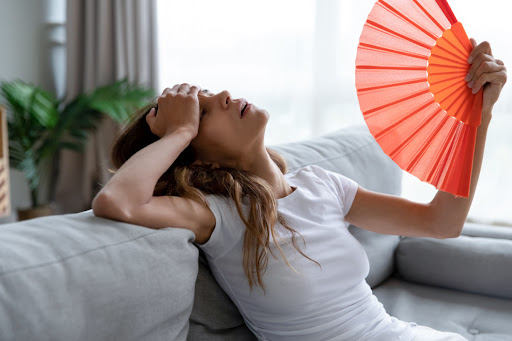When it comes to creating a comfortable living environment, one of the most overlooked factors is humidity. Indoor humidity levels can significantly impact not only your comfort levels but also your health. Whether it’s dry air causing sore throats or high humidity levels in your home promoting the growth of dust mites, managing the amount of moisture in your home is crucial. But what is the ideal humidity level in a home?
You don’t have to simply put up with high humidity. Let’s discuss the best humidity level in more detail below so that you can get your household’s comfort back on track.
Understanding Humidity Levels
Humidity refers to the amount of water vapor present in the air. It plays a significant role in your indoor air quality and can fluctuate with the change in seasons, particularly during the winter months when cold air holds less moisture.
Notably, both low and high humidity levels can pose challenges. Low humidity can lead to dry skin, while high humidity can encourage the growth of mold and mildew. Therefore, maintaining the best humidity level is essential for ensuring adequate comfort and health.
The Best Humidity Level in a Home
According to various experts, the ideal indoor humidity range is between 30 and 50 percent. When humidity in the home falls below this range, it can lead to dry air that causes issues like dry skin, sore throats, and irritated sinuses. Conversely, if the humidity exceeds this range, it can result in an excess of moisture levels that promote the growth of mold and bacteria, leading to respiratory problems and allergies.
How to Manage Humidity in Your Home
Although it’s important to know what the ideal humidity level in a home is, understanding how to maintain the best humidity level is just as crucial. Managing humidity involves two primary tasks: measuring the current humidity level and making adjustments as necessary.
Hygrometers are the most common tool used to measure the amount of moisture or humidity in the air. Once you’ve determined the current humidity level, you can take appropriate measures to either increase humidity or decrease it.
In homes where humidity levels are too low, using a humidifier can help add moisture to the dry air. Conversely, for homes with high humidity levels, a dehumidifier can help reduce excess moisture.
Why Consider a Dehumidifier?
Do you often find yourself asking, “What is the ideal humidity level in a home?” If so, it might be time to consider investing in a dehumidifier. A dehumidifier can help you manage humidity in your home by removing excess water vapor from the air, thereby preventing issues associated with high humidity levels, such as mold growth and dust mites.
Dehumidifiers are particularly useful in areas with a naturally humid climate or during the summer months when humidity levels tend to rise.
Enhance Your Home’s Air Quality with Polar Bear Air Conditioning
Living in the Cayman Islands, we know all too well about high humidity levels. That’s why at Polar Bear Air Conditioning, we offer top-quality dehumidifiers in the Cayman Islands to help you maintain the ideal humidity levels in your home.
Now that you know what the ideal humidity level in a home is, don’t wait any longer to improve your home’s comfort. Our team of experts can help you understand your home humidity level and provide solutions tailored to your needs. Along with dehumidifiers, we also offer other indoor air quality services to ensure that you and your family can breathe easily.
Don’t let high humidity levels compromise your comfort and health. Contact Polar Bear Air Conditioning today and take control of the humidity in your home!


0 Comments